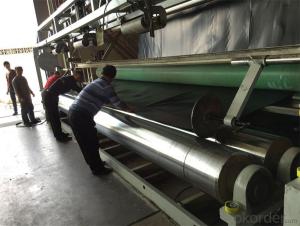Woven geotextiles have come to the fore in recent years as a versatile and essential constituent of many construction and environmental projects. These textiles, which are woven from synthetic or natural fibres, provide a range of advantages that render them indispensable in the world of geotechnical engineering. This article provides an overview of woven geotextiles, discussing their uses, benefits and factors contributing to their widespread use.
The Art of Weaving: A Strong Foundation
Woven geotextiles are carefully made by interlacing fibers together to form a strong fabric. The weaving technique not only gives it strength but also flexibility for design customisation according to specific project requirements. It is both an art and science where each thread is placed with great care to ensure integrity and performance.
Versatile Applications: A Fabric for Every Project
Their versatility is one of the most striking aspects about woven geotextiles. They are used for various purposes such as reinforcing soil in civil engineering works and serving as filters and drains in environmental projects. In road construction, these textiles help distribute loads uniformly thereby preventing cracks and potholes. For landscaping they assist control slope erosion ensuring longer lasting beautiful asset.
The Power of Filtration: Separating and Protecting
Filtration is one major role played by woven geotextiles. They allow water to pass through while at the same time blocking soil particles thus preserving soil structure .This aspect becomes important especially when constructing dams or levees because without this method soil erosion can weaken structures.The fabric acts like a shield protecting underlying materials against the erosive power of water.
Drainage Solutions: Managing Water Flow
Additionally, in relation to filtration, there is effective drainage provided by woven geotextiles. These materials can be employed alongside others so as create avenues whereby water will flow away from areas needing protection from water damage. This comes in handy particularly where there prone flooding sites or places where the water table is high and thus proper drainage is mandatory to avoid harming structures.
Reinforcement: Strengthening the Framework
Another feature that makes these geotextiles useful is their reinforcement ability. They can increase bearing capacity of soils when used with them hence making it possible for heavier loads to be supported. This becomes more beneficial especially in road, bridges and other infrastructural projects which heavily rely on soil’s strength for success.
Environmental Considerations: A Sustainable Choice
Woven geotextiles are both functional and eco-friendly. These can be made from recycled materials and are designed to decompose over time so as to minimize their environmental impact. Moreover, they play a role in erosion control and soil stabilization thereby enhancing conservation of natural landscapes and prevention of soil depletion.
The Future of Woven Geotextiles: Innovation and Advancement
With increasing demand for sustainable construction materials woven geotextiles have also witnessed innovation within this area. New materials, weaving techniques and applications that will improve on the quality and durability of the textile are under investigation by researchers and engineers all over the world .Indeed, there may even be some more futuristic woven geotextiles that address today’s different needs in the construction industry as well as environment sector coming up soonest.
A Personal Touch: Emotional Connection.
Having seen the impact of woven geotextiles, I can confirm that they have an immense effect on projects. Passionate involvement in the process is sparked when one sees the initial unfolding of the fabric as well as its contribution to a finished structure. More than just being a material, this fabric is a solution, a defense and a tribute to human ingenuity.
Conclusion: Woven Geotextiles – A Fabric of Progress.
In conclusion, woven geotextiles are emblematic of what material science and engineering can achieve. They are indeed fabrics for progress because they silently influence our world through infrastructure and environmental initiatives. As we keep coming up with new uses for these textiles, their significance will only continue to increase in our lives. These are not simply modern materials – they form the basis for future advancement.







